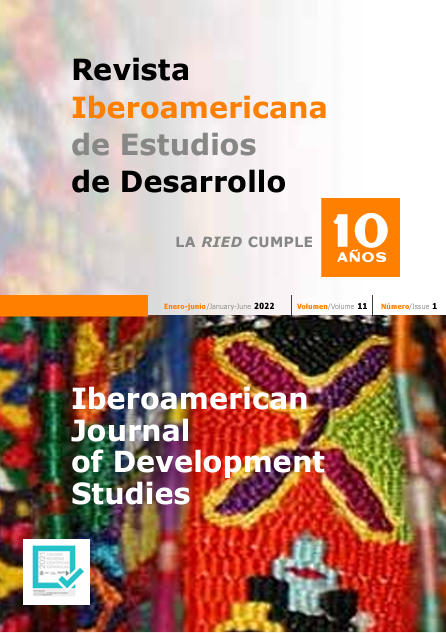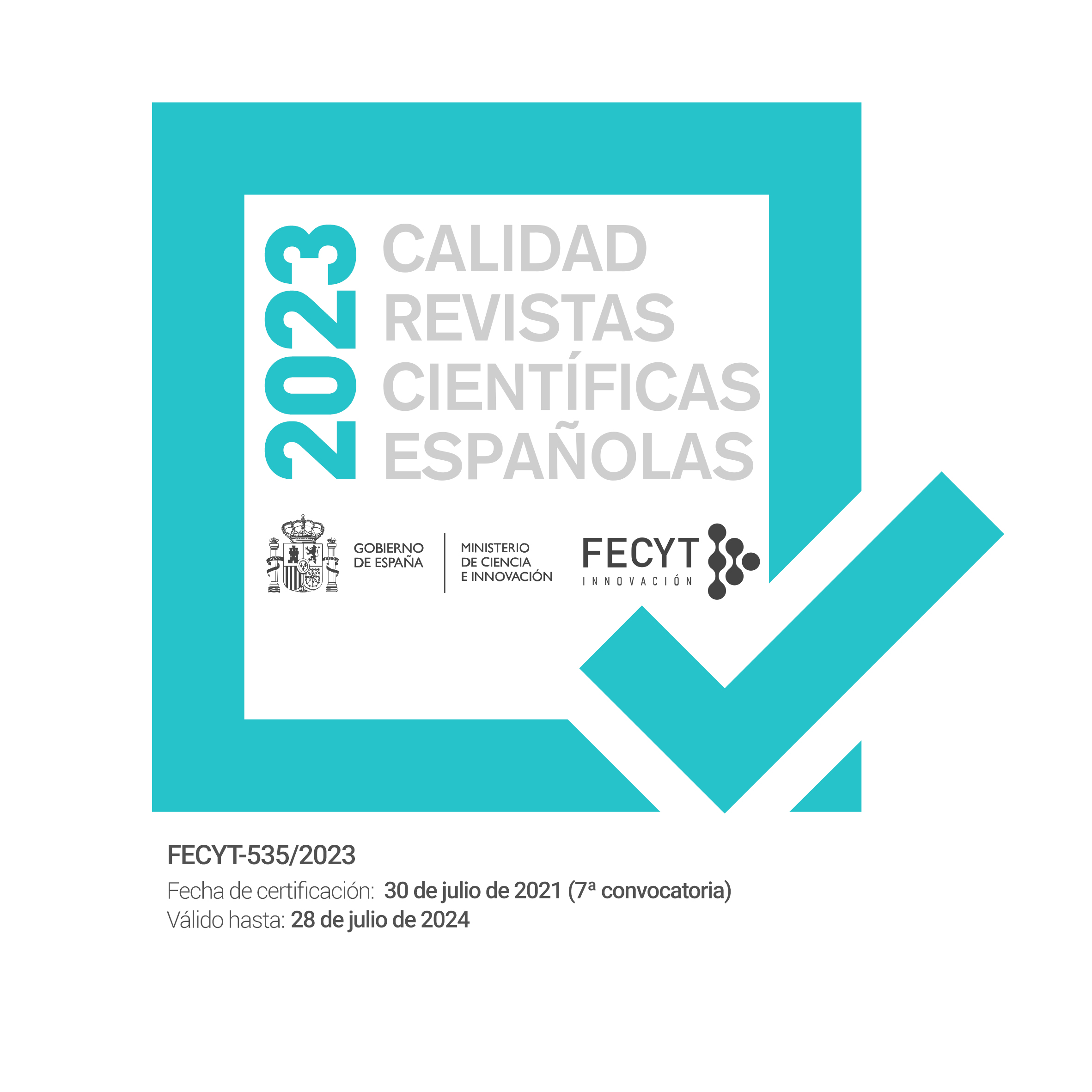Economic opportunities for Mexican women from low socioeconomic status: results from a technical and life skills training program
DOI:
https://doi.org/10.26754/ojs_ried/ijds.618Keywords:
job training, economic empowerment, gender inequality, Mexico, Latin AmericaAbstract
This study presents the outcomes of a technical and life-skills training program in Mexico aimed to help women from low socioeconomic status (SES) find formal employment in sales, retail, and/ or customer service. To determine the extent to which the program reached its target population and its impacts, researchers analyzed a national database of over sixty-eight thousand Mexican beneficiaries from 2016 to 2020 and conducted telephone surveys with a representative sample of women beneficiaries in Veracruz. Results from the national-level analysis of 5,326 women participants identified as low SES indicate that 23 % found better economic and educational opportunities. The state-level analysis of 94 low SES women in Veracruz was higher, with 40 % reporting to have found better opportunities; of those who reported salary information, roughly half improved their income. Lessons learned are discussed regarding reaching target populations and the potential of job training programs in developing countries.
Downloads
References
ASOCIACIÓN MEXICANA DE AGENCIAS DE INTELIGENCIA DE MERCADO Y OPINIÓN [AMAI] (2017). Descripción de los Niveles Socioeconómicos (NSE). https://www.amai.org/NSE/index.php?queVeo=niveles , access September 25, 2021.
ATTANASIO O, KUGLER A AND MEGHIR C (2011). Subsidizing Vocational Training for Disadvantaged Youth in Colombia: Evidence from a Randomized Trial. American Economic Journal: Applied Economics 3(3):188-220.
BERHEIDE CW (2013). Sticky Floor. In: Smith V (ed.). Sociology of Work. Sage Reference, California, pp 825-827.
BETCHERMAN G, OLIVAS K DAR A (2004). Impacts of Active Labour Market Programs: New Evidence form Evaluations with Particular Attention to Developing and Transition Countries. Social Protection Discussion Papers and Notes. The World Bank, pp 1-94.
BETCHERMAN G, GODFREY M, PUERTO S, ROTHER F, STRAVRESKA A (2007). A Review of Interventions to Support Young Workers: Findings of the Youth Employment Inventory. Social Protection Discussion Papers and Notes. The World Bank, pp. 1-83.
BRUSCHINI C (2006). Trabalho doméstico: Inatividade econômica ou trabalho não-remunerado? Revista Brasileira de Estudos de População 23(2):331-353.
BUCHELI M (2005). Las políticas activas de mercado de trabajo: Un panorama internacional de experiencias y evaluaciones. Estudios y Perspectivas. CEPAL, pp. 1-38.
BUQUET AG, MORENO H. (2017). Trayectorias de mujeres Educación técnico-profesional y trabajo en México. Asuntos de Género. CEPAL, pp. 1-65.
CANELAS C, SALAZAR S (2014). Gender and ethnic inequalities in LAC countries. IZA Journal of Labor & Development 3(1):1-15.
CARD D, KLUVE J, WEBER A (2010). Active labour market policy evaluations: A meta-analysis. Economic Journal, 120(548):452-477.
CARD D, IBARRARÁN P, REGALIA F, ROSAS-SHADY D, SOARES Y (2011). The Labor Market Impacts of Youth Training in the Dominican Republic. Journal of Labor Economics 29(2):267-300.
CHOW EN-L, BERHEIDE CW (1988). The Interdependence of Family and Work: A Framework for Family Life Education, Policy, and Practice. Family Relations 37(1):23-28.
COMISIÓN ECONÓMICA PARA AMÉRICA LATINA Y EL CARIBE (CEPAL) (2017). Estrategia de Montevideo para la Implementación de la Agenda Regional de Género en el Marco del Desarrollo Sostenible hacia 2030. Naciones Unidas. https://repositorio.cepal.org/handle/11362/41011 , access September 25, 2021.
COMISIÓN ECONÓMICA PARA AMERÍCA LATINA Y EL CARIBE (CEPAL) (2019). Planes de igualdad de género en América Latina y el Caribe: Mapas de ruta para el desarrollo. CEPAL. https://www.cepal.org/es/publicaciones/41014-planes-igualdad-genero-america-latina-caribe-mapas-ruta-desarrollo , access September 25, 2021.
CONSEJO NACIONAL DE EVALUACIÓN DE LA POLÍTICA DE DESARROLLO SOCIAL (2020). Pobreza en México: Resultados de pobreza en México 2020 a nivel nacional y por entidades federativas. https://www.coneval.org.mx/Medicion/MP/Paginas/Pobreza_2020.aspx, access September 16, 2021.
DAR A, TZANNATOS Z (1999). Active labor market programs: A review of the evidence from evaluations. Social Protection Discussion Papers and Notes. The World Bank, pp 1-86.
FERNÁNDEZ GARRIDO J, NAVARRO ABAL Y, CLIMENT RODRÍGUEZ JA (2013). ¿Cuál es el papel de las políticas activas de mercado de trabajo en tiempos de crisis? Revista Barataria (15):95-109.
FITZENBERGER B, OSIKOMINU A, VÖLTER R (2008). Get Training or Wait? Long-Run Employment Effects of Training Programs for the Unemployed in West Germany. Annales d’Économie et de Statistique 91/92:321-355.
FRIEDLANDER D, GREENBERG DH, ROBINS PK (1997). Evaluating Government Training Programs for the Economically Disadvantaged. Journal of Economic Literature 35(4):1809-1855.
GARDUÑO-RIVERA R (2013). Factors that Influence Women’s Economic Participation in Mexico. Economía Mexicana Nueva Época 2(24):541-564.
GASPARINI L, MARCHIONNI M (2015). Overview. In: Gasparini L, Marchionni M (eds.). Bridging gender gaps? The rise and deceleration of female labor force participation in Latin America. Universidad Nacional de La Plata, La Plata, pp. 11-41.
GONZÁLEZ-VELOSA C, RIPANI L, ROSAS-SHADY D (2012). ¿Cómo mejorar las oportunidades de inserción laboral de los jóvenes en América Latina? Notas Técnicas del Banco Interamericano de Desarrollo, pp. 1-64.
GUZMÁN G (2014). How effective are active employment policies to reduce unemployment in EU countries? Revista Atlántica de Economía 2(1):1-15.
HARLAN SL, BERHEIDE CW (1994). Barriers to Work Place Advancement Experienced by Women in Low-Paying Occupations. Federal Publications, Paper 122:1-91.
HEATH R, JAYACHANDRAN S (2017). The Causes and Consequences of Increased Female Education and Labor Force Participation in Developing Countries. In: Averett SL, Argys ML, Hoffman SD (eds.). The Oxford Handbook of Women and the Economy. Ozford Handbooks Online, New York, pp. 1-25.
HECKMAN JJ, LALONDE RJ, SMITH JA (1999). The Economics and Econometrics of Active Labor Market Programs. Handbook of Labor Economics 3(1):1865-2097.
HECKMAN JJ, STIXRUD J, URZUA S (2006). The Effects of Cognitive and Noncognitive Abilities on Labor Market Outcomes and Social Behavior. Journal of Labor Economics 24(3):411-482.
IBARRARÁN P, ROSAS SHADY D (2009). Evaluating the impact of job training programmes in Latin America: Evidence from IDB funded operations. Journal of Development Effectiveness 1(2):195-216.
KIM J (2009). Does job training yield positive outcomes for women on public assistance? Journal of Policy Practice 8(3):204-223.
KLEVENS J (2001). Violencia física contra la mujer en Santa Fe de Bogotá: Prevalencia y factores asociados. Revista Panamericana de Salud Pública 9(2):78-83.
LEAHEY E (2001). A help or a hindrance? The impact of job training on the employment status of disadvantaged women. Evaluation Review 25(1):29-54.
LUPICA C (2015). Instituciones laborales y políticas de empleo: avances estratégicos y desafíos pendientes para la autonomía económica de las mujeres. Asuntos de Género. CEPAL, pp. 1-49.
MARTIN JP (2015). Activation and active labour market policies in OECD countries: Stylised facts and evidence on their effectiveness. IZA Journal of Labor Policy 4(1):1-29.
MARTIN JP, GRUBB D (2001). What Works and for Whom: A Review of OECD Countries’ Experiences with Active Labour Market Policies. SSRN Electronic Journal 8(2):9-56.
MAYOMBE C (2016). Enabling labour market entry for adults through non-formal education and training for employment in South Africa. International Journal of Lifelong Education 35(4):376-395.
MEGHIR C, KUGLER AD, ATTANASIO O (2009). Subsidizing vocational training for disadvantaged youth in developing countries: Evidence from a randomized trial. American Economic Journal: Applied Economics 3(3):188-220.
MILLENAAR V (2014). Trayectorias de inserción laboral de mujeres jóvenes pobres: El lugar de los programas de Formación Profesional y sus abordajes de género. Trabajo y Sociedad 1(22):325-339.
MUÑOZ ROJAS C (2017). Capacitación laboral para la autonomía económica de mujeres en situación de pobreza: El caso de Chile. Asuntos de Género. CEPAL, pp. 1-96.
ÑOPO H, ROBLES M, SAAVEDRA J (2008). Occupational training to reduce gender segregation: The impacts of ProJoven. Revista Economía, Fondo Editorial ‒ Pontificia Universidad Católica del Perú 31(62):33-54.
ORGANISATION FOR ECONOMIC CO-OPERATION AND DEVELOPMENT (OECD) (1993). Employment Outlook 1993. http://www.oecd.org/els/employmentoutlook-previouseditions.htm , access May 15, 2019.
ORGANISATION FOR ECONOMIC CO-OPERATION AND DEVELOPMENT (OECD) (2015). Social Impact Investment: Building the Evidence Base. OECD Publishing, Paris.
ORGANISATION FOR ECONOMIC CO-OPERATION AND DEVELOPMENT (OECD) (2017). The Pursuit of Gender Equality: An Uphill Battle. OECD Publishing, Paris.
ORGANISATION FOR ECONOMIC CO-OPERATION AND DEVELOPMENT (OECD) (2020). OECD Labour Force Statistics 2020. OECD Publishing, Paris.
PAGÁN JA, SÁNCHEZ SM (2000). Gender differences in labor market decisions: Evidence from rural Mexico. Economic Development and Cultural Change 48(3):619-637.
PEPIN JR (2019). Beliefs About Money in Families: Balancing Unity, Autonomy, and Gender Equality. Journal of Marriage and Family 81(2):361-379.
QUINLAN E (2008). Women’s job-related training in Canada: Returns to human capital investments. International Journal of Lifelong Education 27(1):71-92.
RICHARDSON VE (1999). Women and Retirement. Journal of Women & Aging 11(3):49-66.
RICO MN, TRUCCO D (2014). Adolescentes: Derecho a la educación y al bienestar futuro. Serie Políticas Sociales. CEPAL, pp. 1-89.
RIVAS-ÁNGELES KP, ALBERTI-MANZANARES P, OSNAYA GONZÁLEZ M, LEÓN-MERINO A (2017). Mujeres rurales: Del proyecto productivo a la microempresa en Champotón, Campeche. Revista Mexicana de Ciencias Agrícolas 6(6):1359-1371.
SEPÚLVEDA L (2009). Políticas para la inserción laboral de mujeres y jóvenes en Chile. Colección Documentos de Proyectos. CEPAL, Swedish International Development Cooperation Agency, pp. 1-104.
THIMMAPPA L, SARAN A, D’SOUZA SRB, BINIL V (2021). PROTOCOL: The effectiveness of social protection interventions in low- and middle-income countries: An evidence and gap map. Campbell Systematic Reviews 17(3):1-25.
TIEDEMANN J (2000). Parents’ gender stereotypes and teachers’ beliefs as predictors of children’s concept of their mathematical ability in elementary school. Journal of Educational Psychology 92(1):144-151.
TRUST FOR THE AMERICAS (2015). Empowering Young Mexican Women through Retail Training. Unpublished document.
TRUST FOR THE AMERICAS (2019). VIVE- Come, be inspired, and sell. https://www.trustfortheamericas.org/programs/POETA/vive-come-be-inspired-and-sell , access September 25, 2021.
URZÚA S, PUENTES E (2010). La evidencia del impacto de los programas de capacitación en el desempeño en el mercado laboral. Notas Técnicas del Banco Interamericano de Desarrollo, pp. 1-114.
VACA-TRIGO I (2019). Oportunidades y desafíos para la autonomía de las mujeres en el futuro escenario del trabajo. Asuntos de Género. CEPAL, pp. 1-72.
VOGEL L (2000). Domestic Labor Revisited. Science & Society 64(2):151-170.
WELLER J (2009). El fomento de la inserción laboral de grupos vulnerables. Consideraciones a partir de cinco estudios de caso nacionales. Documento de Proyectos. CEPAL, Swedish International Development Cooperation Agency, pp. 1-123.
Downloads
Published
How to Cite
Issue
Section
License
Copyright (c) 2022 Shaye S. Worthman, Adriana Rueda-Barrios

This work is licensed under a Creative Commons Attribution-NonCommercial-NoDerivatives 4.0 International License.








